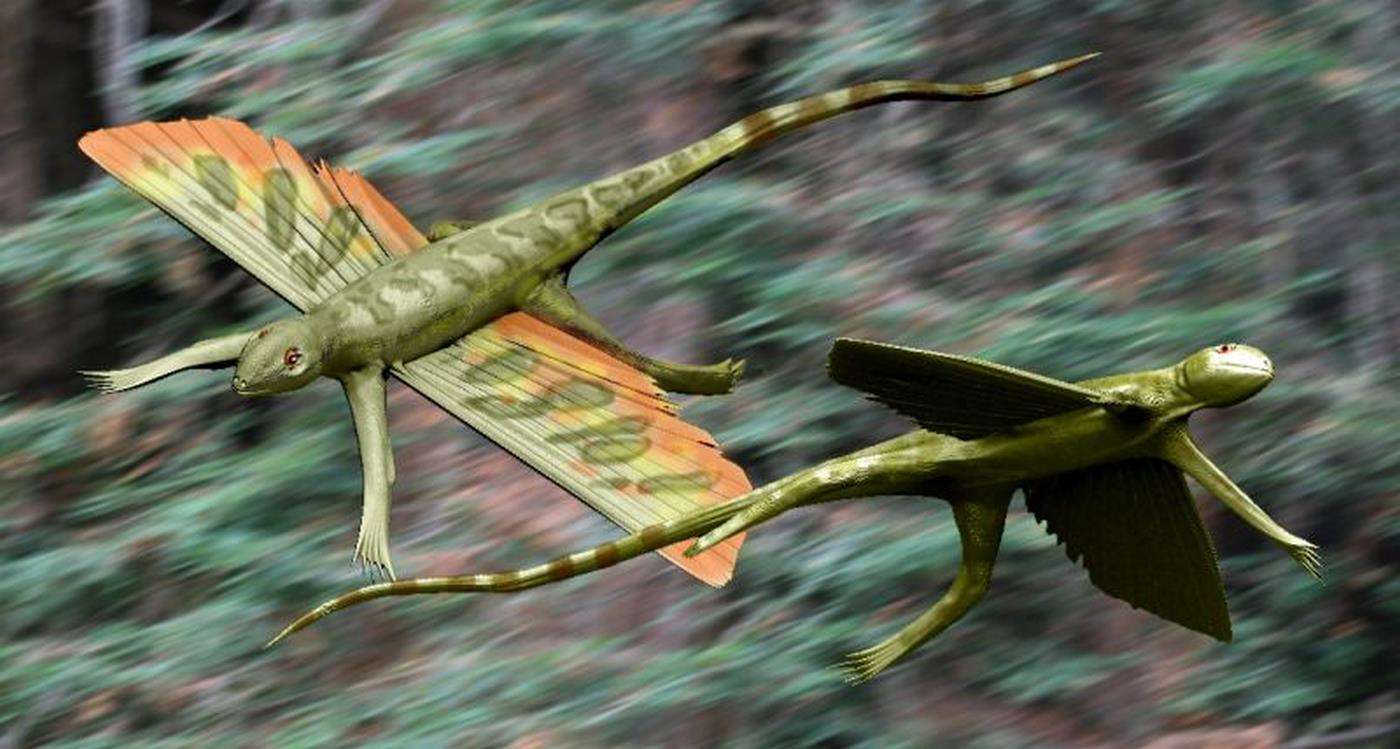Quick-Thinking Flight Attendant and Passengers Save 6 Flamingo Eggs Aboard Flight
Responding to the zookeeper's plea for help, May promptly filled rubber gloves with warm water which the keeper used as a makeshift nest

In fantasy fiction, the dragon is one of the most common mythical beasts, but these giant flying lizards defy the reality that flying lizards have actually been found on Earth through many once upon a times—they were just really small.
Case in point, this small fry from 200 million years ago, a Kuehneosaur, a flying reptile that used a membrane of skin that stretched out along a set of fantastically elongated rib bones that allowed them to glide from tree to tree.
The discovery was made by University of Bristol masters student Mike Cawthorne, and the university press reports that he has been researching numerous reptile fossils from limestone quarries which formed Mendip Palaeo-island—the biggest sub-tropical island at a time when Great Britain was an archipelago.
Mendip Palaeo Island would have stretched 18 miles across and was home to many small reptiles that roamed the Triassic-Jurassic boundary eon eating plants and insects.
"All the beasts were small," said Mike. "I had hoped to find some dinosaur bones, or even their isolated teeth, but in fact I found everything else but dinosaurs."
The Kuehneosaurus discovered by Cawthorne is actually not a true lizard, and is more closely related to crocodiles, which for those interested in such things means it's classified as an Archosaur, rather than a Lepidosaur.
"It took a lot of work identifying the fossil bones, most of which were separate and not in a skeleton," explained Professor Mike Benton, from Bristol's School of Earth Sciences, who was a co-author on Cawthorne's paper describing the various animals.
Along with the glider, Cawthorne found the teeth of a Trilophosaurus, called Variodens inopinatus, which was a stocky-headed plant-eater that grew as long as a large monitor lizard does today, and an aquatic lizard called Pachystropheus which swam and ate shrimp.
"Mike Cawthorne was able to compare the isolated jaws and other bones with more complete specimens from the other sites around Bristol," said Benton. "He didn't find any dinosaur bones, but it's likely that they were there because we have found dinosaur bones in other locations of the same geological age around Bristol."
Under the cloak of winter temps at between 9° and 3°C, or between 40° and 49°F, with clouds and scattered showers, the residents of Great Britain might find it strange to think that their island was once sitting in a subtropical sea of islets where dozens of lizards climbed trees in steamy forests.
SHARE This Look Back Into Early England With Your Friends…
Be the first to comment